Epic Tanzania, Kenya & Uganda Safari (Dec-Jun)
20 days, 19 nights
Price Range:
$21,777 – $53,394
(all-inclusive price per person, depending on dates & camps selected)
 view larger image
view larger image
If you go to Africa just once – or if Africa’s magic draws you back time and again – this safari will immerse you in a diverse selection of the best wildlife viewing the continent has to offer. Track migrating herds in the Serengeti, meet mountain gorillas in the jungles of Uganda, marvel at gigantic rhinos in Lewa and even bigger elephants in Amboseli. And that’s just for starters.

Our Expert Says
When friends ask me, “What are your suggestions for East Africa?”, each and every place on this itinerary would be on my list. This safari is truly EPIC. I love that it covers everything from the Serengeti, to witness the wildebeest in birthing season, and Amboseli, to observe the herds of elephant in the shadow of Kilimanjaro to the dense wildlife populations of the Maasai Mara and the Lewa private conservancy, where you can see conservation work in action to protect rare species like black and white rhino. Top that off with treks to see mountain gorillas, and there is no more rewarding experience.
– Wendy Klausner
 view image gallery
view image gallery
Day 1: Arusha
Arusha is the safari capital of the world, the jumping-off point for the Serengeti, Ngorongoro Crater and Kilimanjaro. In the shadow of Mount Meru, where lush forest intersects grassy savanna, Arusha sits within an agricultural region famed for coffee and tea. Originally a German settlement, Arusha today is a lively city with an international flair. Arusha is noted for handcrafts, and the Cultural Heritage Center boasts an array of carvings, paintings, batiks and baskets.
 view image gallery
view image gallery
Days 2-4: Serengeti Nat'l Park
The Serengeti is legendary. Here on Africa’s Great Plains, where the blue sky arcs over shimmering gold grasslands, the number of animals is staggering. Buffalo, elephant and giraffe roam the savanna. Leopards rest in acacia trees, pursuing prey with lion, cheetah, jackal and hyena. While the Serengeti is riveting year-round, nothing matches the phenomenon of the migration, when 1.5 million wildebeest and zebra traverse the plains in endless columns of thundering hoofbeats.
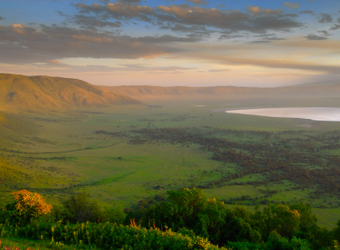 view image gallery
view image gallery
Days 5-6: Ngorongoro Crater
Within the walls of the world’s largest unbroken volcanic caldera is the densest concentration of wildlife in Africa. The crater floor, 12 miles across, is a wonder of the natural world. More than 30,000 animals live in this primeval Eden, including huge herds of gazelle and the lion and hyena that prey upon them. Wildebeest, zebra, eland and giraffe are abundant, with leopard and cheetah in pursuit. The very fortunate may also spot the endangered black rhino.
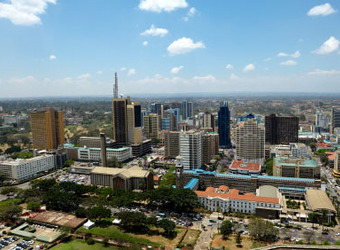 view image gallery
view image gallery
Day 7: Nairobi
A rough outpost amidst a highland swamp as the colonial capital of British East Africa in 1907, Nairobi today is the urban heartbeat of independent Kenya and one of Africa’s most important cities. Nairobi has long been a meeting point for adventurers and travelers from all over the world, and most Kenya safaris still originate here. Nairobi’s national museum and the historic home of Karen Blixen, author of Out of Africa, are popular attractions.
 view image gallery
view image gallery
Days 8-9: Amboseli / Chuylu Hills
Elephants abound in Amboseli, and to see these African icons against the backdrop of snow-topped Mount Kilimanjaro is a timeless image of the continent. This mosaic of dusty plains and swampy springs is also home to buffalo, wildebeest, zebra, impala, hyena, lion, leopard, cheetah and a third of Kenya’s nearly 1,100 bird species. The nearby photogenic black lava Chyulu Hills are a captivating area of ancient craters, rolling grasslands and aromatic cedar forest.
 view image gallery
view image gallery
Days 10-11: Lewa / Laikipia
The dramatic Laikipia region, wild and sparsely populated, has become a center for global conservation leadership. Much of Laikipia is comprised of privately owned ranches that have been combined by local communities to create vast conservancies, with free-ranging wildlife including elephant, lion, leopard, buffalo and abundant plains game. Renowned among Laikipia’s sanctuaries is Lewa Wildlife Conservancy, which has played a critical role in sustaining endangered rhinoceros, Grevy’s zebra and sitatunga.
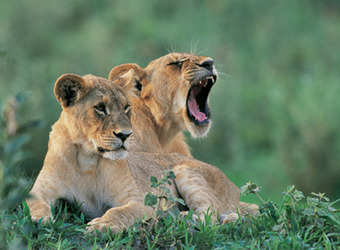 view image gallery
view image gallery
Days 12-14: Maasai Mara Nat'l Reserve
The famed Maasai Mara is one of Africa’s most acclaimed wildlife reserves, renowned for its wildebeest migration, prides of lion and huge herds of plains animals. The Mara is the northern portion of the Serengeti Plains, and we find excellent wildlife viewing all year long in these grasslands. The reserve is named for the Maasai tribespeople, the traditional inhabitants of the area who graze cattle here, and the Mara River that runs through it.
 view image gallery
view image gallery
Day 15: Nairobi
Return to Nairobi to spend the night before continuing to Uganda in the morning.
 view image gallery
view image gallery
Day 16: Entebbe / Kampala
Safaris in Uganda typically start and finish in Entebbe or nearby Kampala. Entebbe, on Lake Victoria, was a former British colonial administrative center. The National Botanical Gardens, laid out in 1898, are a must-see here. Uganda’s capital, Kampala, was established during the 13th century Buganda kingdom, one of the oldest in Africa. Built among lush hills and wetlands that were once royal impala-hunting grounds, Kampala today is a modern city of 1.7 million.
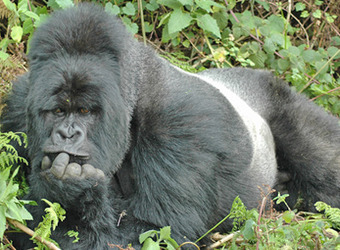 view image gallery
view image gallery
Days 17-19: Bwindi National Park
Named for the dense forests it encompasses, Bwindi Impenetrable National Park is home to roughly half the world’s remaining mountain gorillas. Though the park is best known for its outstanding gorilla tracking, it also provides refuge to chimpanzees, monkeys, elephants and various small antelope. Bwindi is a key Uganda birding destination, with 23 of Uganda’s 24 Albertine Rift endemics, including threatened species such as African green broadbill and Shelley's crimson wing.
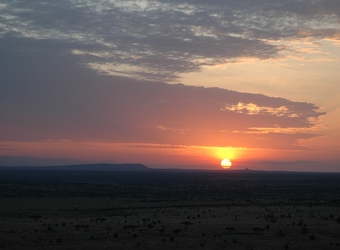 view image gallery
view image gallery
Day 20: Entebbe/Home
Your safari adventure ends today in Entebbe, Uganda.
